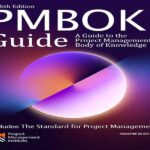- عنوان مجله: Transition Metal Oxides for Electrochemical Energy Storage
- نویسنده: Vestal, NY
- حوزه: َذخیره سازی انرژی
- سال انتشار: 2022
- تعداد صفحه: 420
- زبان اصلی: انگلیسی
- نوع فایل: pdf
- حجم فایل: 16.5 مگابایت
Since their introduction into portable electronic devices more than 30 years ago, lithium-ion batteries have grown to dominate the energy storage sector and are now the technology of choice for powering portable devices, electric vehicles, and increasingly, smart grids. At the heart of lithium-ion battery technology is themechanism of lithium-ion intercalation into solid-state host materials for both the cathode and the anode. Intercalation reactions into transition metal compounds were of great interest in the 1970s because of the possibility of controlled structural and electronic modification. Our team at Exxon made seminal discoveries into the mechanism of electrochemical Li+ intercalation forming the basis of Li-ion batteries. These studies developed the important distinction between intercalation vs. conversion or decomposition reactions, and showed the importance of intercalation reactions for extended high-capacity cycling. This work led to the first generation of lithium-ion batteries (Exxon and Moli-Energy), and identified the challenges of working with lithium metal anodes. Following the seminal studies of lithium intercalation into transition metal chalcogenides, attention turned to transition metal oxides due to their higher intercalation potentials in a number of laboratories. John Goodenough’s group identified the layered oxides such as LiCoO2 as outstanding replacements for the layered sulfides. Today, transition metal oxides are the preferred materials for lithium-ion battery cathodes because of their high redox potentials and good lithium-ion intercalation capacity. Besides their use in existing Li-ion battery technology, transition metal oxides also form the basis of emerging beyond Li-ion chemistries such as Na-ion, where they have much higher capacities than the sulfides. This book provides a timely reference into the solid-state chemistry, characterization, and modeling of transition metal oxides for electrochemical energy storage written by international experts. Chapters are devoted to mechanisms of energy storage (such as coupled cation/electron transfer reactions; Na+ intercalation; conversion reactions; and anion redox), characterization (such as nuclear magnetic resonance and X-ray techniques), and modeling. Emerging hot topics, such as the role of artificial intelligence and machine learning methods in predicting properties of energy storage materials and cobalt-free transition metal oxides cathodes for Li-ion, are also covered. Overall, the book provides a great reference for novices and experts to gain a deeper understanding into the solid-state chemistry of transition metal oxides of potential use for energy storage.
این کتاب را میتوانید از لینک زیر بصورت رایگان دانلود کنید:
Download: Transition Metal Oxides for Electrochemical Energy Storage




































نظرات کاربران